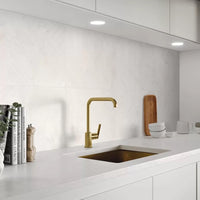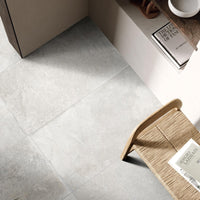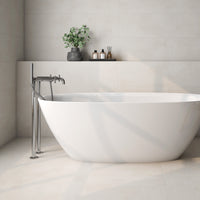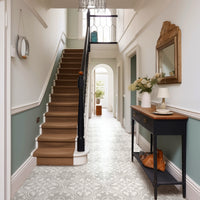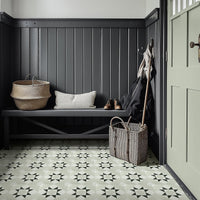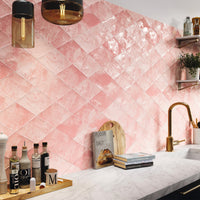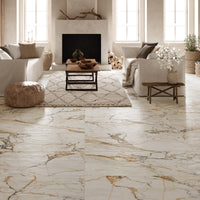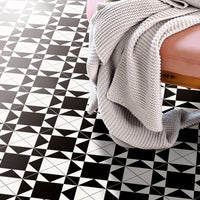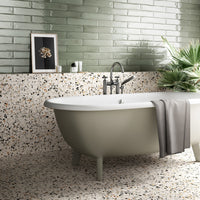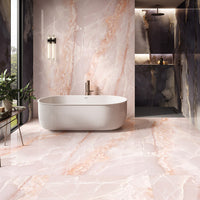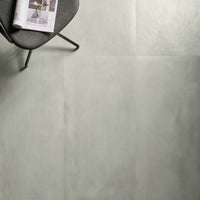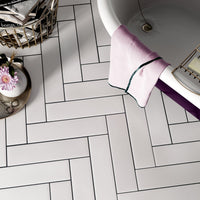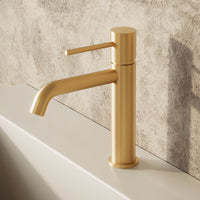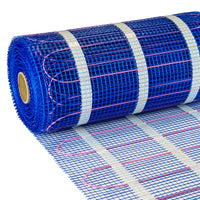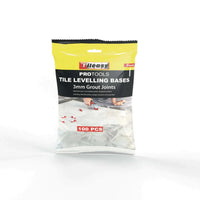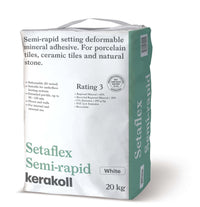It’s hard to pinpoint exactly why, but Victorian houses always feel ‘just right’. There’s something particularly comforting about walking into a place with high ceilings and squeaky floorboards, so it’s no wonder that Victorian tiles are still incredibly popular.
In fact, they’ve never really gone out of fashion. One of the great things about Victorian tiles is how timeless they are – they’ll strike the right note whether you live in a tiny terrace or modern townhouse.
Our modern ranges are inspired by the original patterns, and make a perfect choice for busy family homes. So whether you’re after some period charm or looking to add a timeless touch, Victorian tiles are a great way to go. This guide will tell you all you need to know, to help you make the right choice for your home.
A brief history
During the reign of Queen Victoria, Britain experienced the industrial revolution, a rapid transformation unlike anything seen before. Slums were torn down and replaced with larger houses for the middle classes, who were keen to invest their new wealth.
Businessmen such as Herbert Minton quickly realised that these new homeowners wanted more than just a plain and practical tile; they were after stylish and colourful designs to reflect their personality. Leading designers were employed and new techniques developed to create decorative tiles that had never been seen before.
Which Victorian tiles are right for you?
By the middle of the nineteenth century, there were hundred of pottery kilns in Stoke on Trent, producing all manner of wall and floor tiles. Many of these designs are still produced today, and it’s worth taking the time to consider the right style for you.
Checkerboard
Alternating plain black and white square tiles creates the classic checkerboard pattern, a feature found in homes throughout the British Isles. Our Dorset plain tiles are perfect for this look – and for extra authenticity, they’re still made in the UK. Lay tiles on a 45 degree diagonal for extra brownie points.
If you’re looking for a little twist, our Heritage Chess tiles offer the same chess board effect, but with an aged, vintage finish.
Great for: Timeless hallways and outside paths
Geometric tiles
If there’s one look that sums up Victorian floors it’s this – inlaid, geometric tiles. Traditionally, the patterns were created by hand from thousands of small mosaic pieces – a time consuming and expensive job. These days, the latest patterned tiles are produced using inkjet technology to create intricate detail with all the benefits of porcelain.
Great for: Contemporary and understated style
Patterned tiles
Ornate decorative tiles were another quintessential Victorian design. As they were more expensive than plain tiles, they were laid in areas that guests were likely to see such as porches and hallways. Our modern versions are reproduced from original pattern books to ensure they capture the classic aura.
Great for: Creating an eye-catching focal point
Crackled tiles
The Victorians used their front rooms to display their wealth, but any rooms that visitors were unlikely to see were kept rather plain. Simple, small tiles were used on bathroom and kitchen walls as they were relatively cheap and easy to clean. Over time, the glaze developed hairline cracks which gave them a certain charm and elegance.
These days, crackled tiles are all the rage and the hairline cracks are deliberately enhanced for extra effect.
Great for: Adding depth and colour to any wall
What are Victorian tiles made from?
If you take a look at some original Victorian floor tiles, they’re probably showing their age unless they’ve have some recent TLC.
Unlike the originals, which were usually made from soft clay, our plain and patterned floor tiles are made using ceramic and porcelain. This makes them far more durable than any other type of tile, so they’re really easy to maintain and will last for a lifetime.
Our Crackle and Antique Crackled wall tiles are both made from ceramic, so they’re suitable for pretty much any walls. However, due to their crazed nature we recommend sealing the surface before and after grouting.
Where can I use Victorian tiles?
Although it’s always been incredibly popular to use patterned and geometric tiles in hallways, these days Victorian tiles are used throughout the home. Here’s a few of our favourite ways, to get the creative juices flowing:
Pathways
Take a walk around London and it’s staggering how many front paths are styled with Victorian tiles. And with good reason – the classic checkerboard pattern offers a timeless look that works with properties from any era. Black and white is the obvious combination to pick, but you can also mix red and black tiles together for an authentic appeal.
Bathrooms
These days, the bathroom has become a place to relax so create your own private retreat by choosing tiles that reflect your personality. Floral patterned floor tiles combine perfectly with ever-popular period fittings such as claw-foot bathtubs and pedestal basins, and offer a more understated style compared to moroccan and patchwork tiles.
Walls and splashbacks
Crackled tiles work as well in a contemporary wetroom as they do in a country kitchen. No two tiles are ever exactly alike, so you’re guaranteed to give your walls a personality of their own. We recommend laying the tiles in a brickbond fashion and finishing with a contrasting grout colour for a more authentic look.
Hallways and floors
If you want your floors to be eye-catching without being too busy, then Victorian patterned and geometric tiles make a perfect choice. Their pattern turns the floor into a stylish statement yet the natural tones means they won’t compete with the rest of your decor to be ‘seen’.
It’s also worth remembering that many stylish restaurants and gastro-pubs use plain and patterned Victorian tiles – they combine the homely ‘heritage’ feel with a practicality that few other coverings can match.
Caring for Victorian tiles
Our modern reproductions are pretty low maintenance. Made from ceramic and porcelain, they’re very resistant to stains and scratches, so they’re far easier to look after than original or encaustic tiles. Most of the time, a brush or mop will suffice. Stubborn stains may require a specialist cleaner and a little elbow grease.
Please note that all crackle wall tiles need to be sealed before and after grouting, to protect their glaze.
Can I install Victorian tiles myself?
In general, Victorian tiles are relatively easy to install compared to larger floor and wall tiles. So if you’re a dab hand at DIY and have the right tools, there’s no reason why you can’t have a go yourself.
As with all tiling, it pays to spend as long as you can on the prep work. Make sure your substrates are perfectly flat and level, your tools are clean and there’s enough space to comfortably work in. Plan the layout then plan again – once you’ve started laying the first tiles there’s no going back!
Some of our patterned tiles have a glazed grout joint to give the effect of individual tiles when they’re laid. Match the actual gap between the tiles to this joint, to ensure a consistent look over your whole floor.
